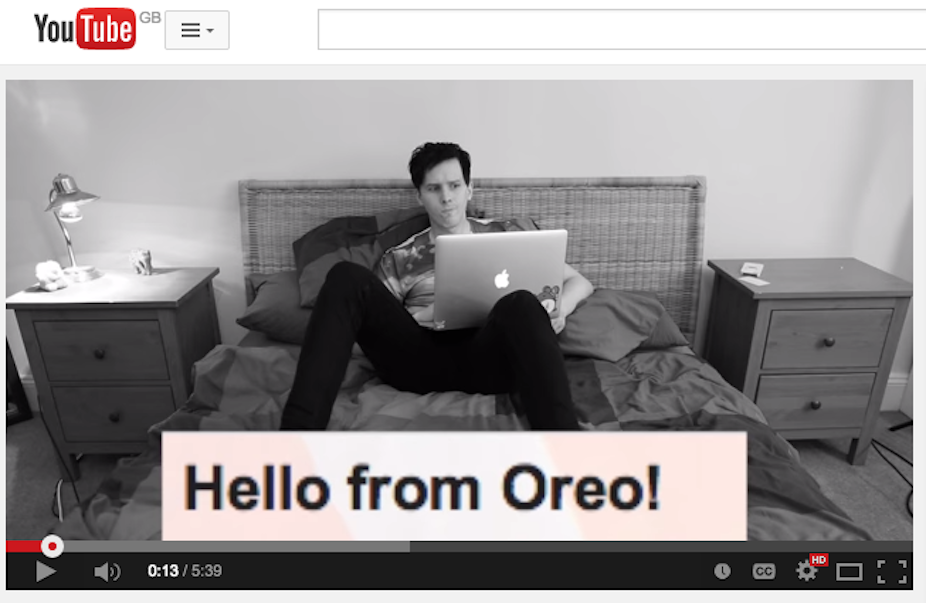Names like Zoella, Caspar, Alfie Deyes, and Tanya Burr might not trip off the tongue for the over 35s, but they are among the vloggers (video bloggers, that is) at the vanguard of radical changes in the media and advertising scene.
The typical internet business model is to build viewer traffic and then wrap advertising around it. Try to watch a popular YouTube clip and you’ll probably be forced to see a few seconds of a paid ad first. With up to six million subscribers to their channels, some vloggers can earn a very good living from conventional advertising, not to mention extending their fame to sell books and acquire TV presenting slots, as Zoella has. More controversially, they can also earn thousands of pounds each time they mention a brand in their video content.
Old issue, new medium
Until now, this has taken place with a relative lack of regulation by advertising watchdogs. But the Advertising Standards Authority (ASA) has now warned that vloggers need to make it clear when they are paid to promote products in their videos. Vloggers must now change the way they label their promoted videos, by putting the words “promoted” or “paid for” in the title. The ASA insists that viewers should be forewarned when seeing promoted content.
Product placement is, of course, is nothing new, but since the ASA had its digital remit extended in 2011, it has had to take a much closer look at advertising on the internet. The ASA tries to ensure that advertising and editorial content are always clearly distinguished and the distinction is a central pillar of UK advertising regulation. And, in light of the research colleagues and I have done into product placement, it can be deceptive if viewers are not aware of the commercial intent within content they are viewing or reading.
Increasingly problematic
Separating content and advertising is increasingly problematic, however, since the shift to digital media. On one hand there is the rise of “native advertising”, which makes promotional content look like editorial. Sites would argue that the content they promote is clearly labelled for readers to see, but the labelling can be so subtle it is hardly noticeable. More to the point, it is valuable to brands precisely because it is buried within ostensibly non-commercial reporting. So, the labelling might satisfy the regulator, but does it change the meaning of the content if the content looks and reads like editorial?
What is more, we can ask what difference labelling really makes. Paid-for product placement has been permitted on UK TV since 2011, and promoted content has to carry a small logo in the corner of the screen as the programme begins. But does this render the advertising transparent to the typical viewer? And does it change our sense of what we are viewing or reading, by virtue of seeing it labelled?
It isn’t easy for the ASA to police promoted content, especially on the internet. For example, many celebrities incorporate brand mentions in their Tweets, and some have been accused of breaking advertising regulations. But, does this mean that Twitterati are not allowed to mention brands spontaneously? Does the ASA need to censor all Tweets for promoted content?
Turning back to TV, the ASA now has a strict set of regulations for paid-for product placement – but UK TV has been awash with brands in scenes for 30 years, even on the BBC. Brands give their products to product placement agencies who then supply them free of charge as props to studio managers and show producers. The agencies take a fee from the brand, and the viewer gets a realistic scene.
The alarm over the start of paid-for product on UK TV in 2011 showed that many people in the UK, including regulators, were blithely unaware of this arrangement. Back in 2009, when regulator Ofcom first consulted over allowing paid-for product placement on UK TV, then Culture Secretary Andy Burnham resisted calls to allow it. But Burnham’s decision was quickly reversed by his successor.
Generational divide?
There may be a generational divide in the assumptions around promoted content. Many young consumers assume as a default position that media content typically has a promotional angle, and they enjoy spotting the ways brands try to outwit them. This is something colleagues and I found when researching product placement on UK television. Younger consumers take a buyer-beware position.
So, do they, and we, need a regulator to nanny us? Or should the regulator accept that a new generation of consumers are media literate enough to make judgements on the credibility of branded content?
Policing promoted content is a major problem for regulators. Advertisers can be slippery, and media brands are under huge pressure to monetise content without interrupting the consumers’ online experience. Labelling branded content might seem a way of applying the principle of the separation of editorial and advertising, but it may be less of a solution than it appears.

